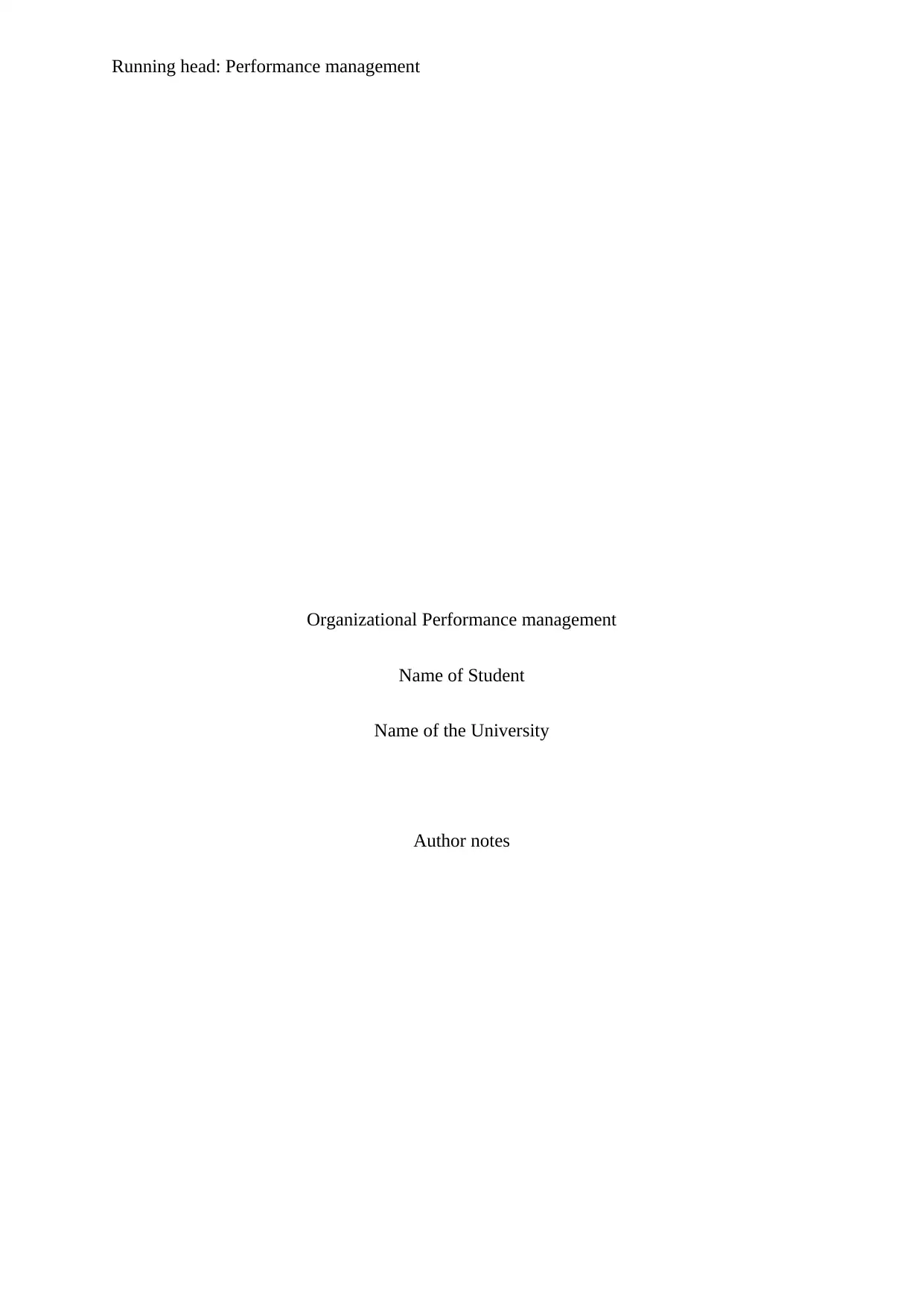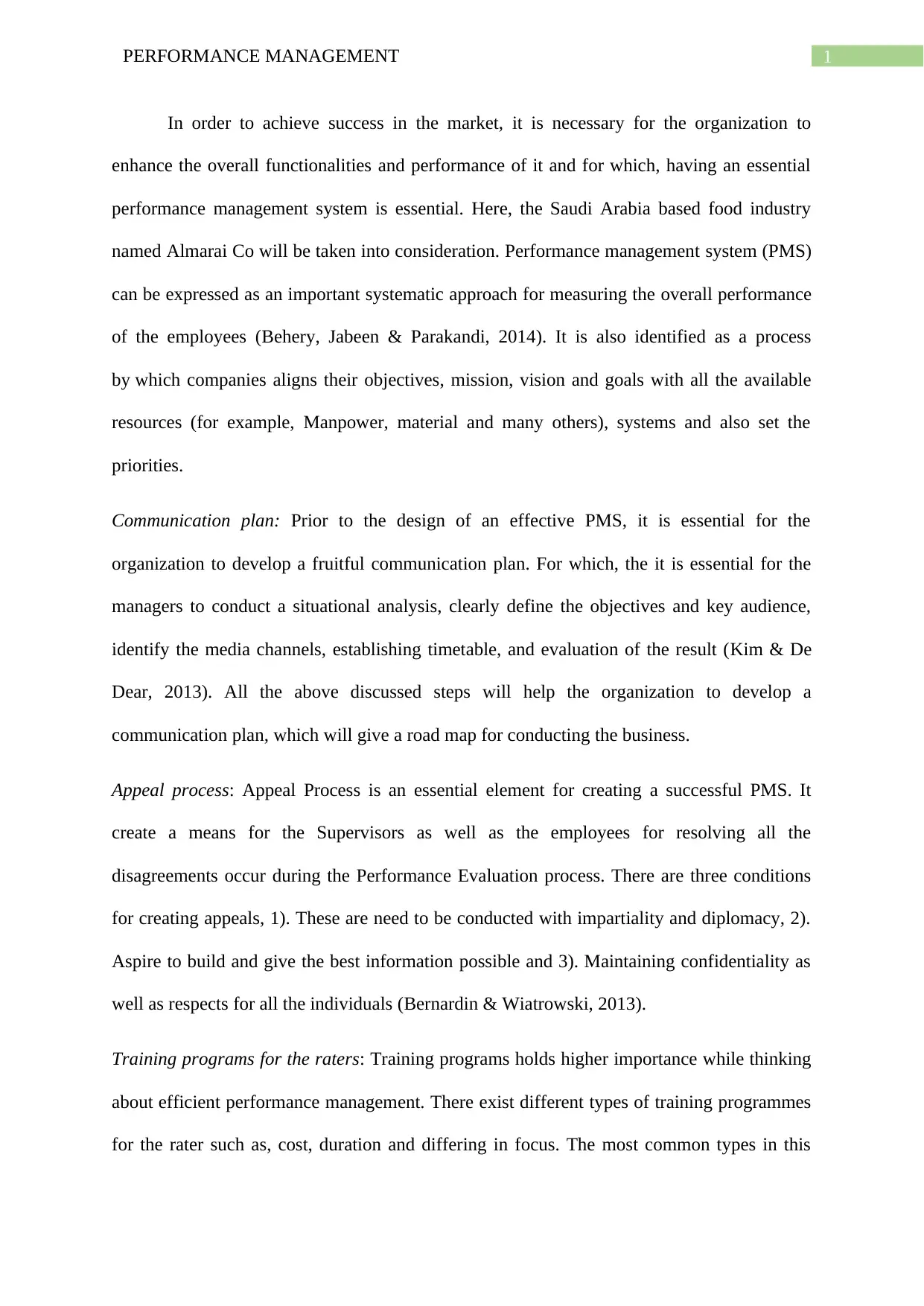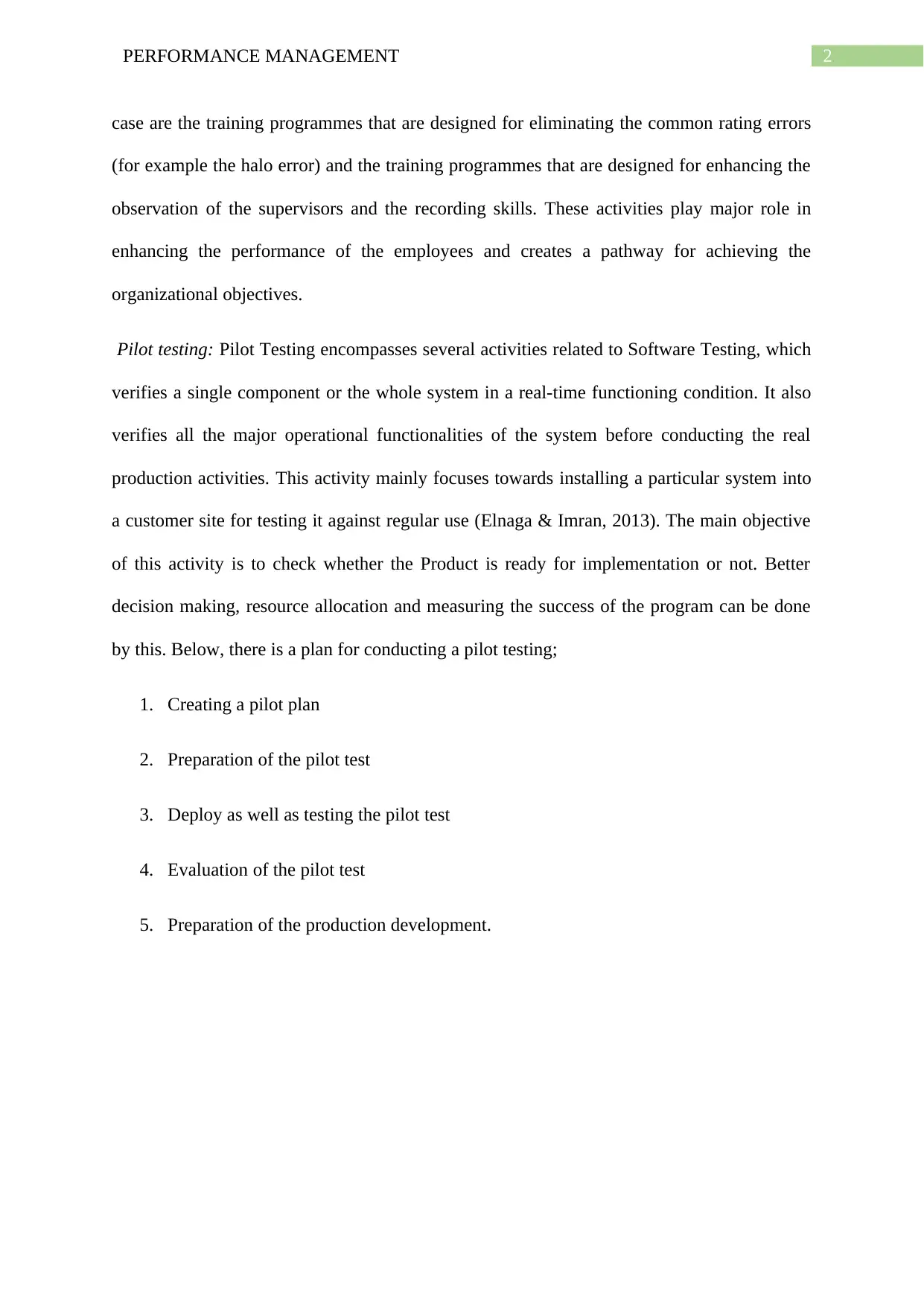Performance Management System Analysis: Almarai Co Report
VerifiedAdded on 2022/08/17
|4
|723
|42
Report
AI Summary
This report provides a detailed analysis of the performance management system (PMS) implemented by Almarai Co, a Saudi Arabia-based food industry. It emphasizes the importance of PMS in enhancing organizational performance and aligning objectives with available resources. The report explores key components of an effective PMS, including the development of a communication plan through situational analysis and defining objectives. It also examines the appeal process for resolving disagreements during performance evaluations and the significance of training programs for raters to eliminate rating errors. Furthermore, the report discusses the implementation of pilot testing to verify system functionalities before full-scale production. The report references various research papers on performance management and related topics, offering a comprehensive overview of the subject.
1 out of 4











![[object Object]](/_next/static/media/star-bottom.7253800d.svg)